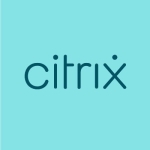What is our primary use case?
The cluster is used for software tests, evaluations, or migration projects driven by Nutanix Calm. We needed a simpler approach with a higher grade of automation for testing purposes. As I already stated in my Nutanix Calm review, Nutanix Calm lets us do this. AHV was used so that we would not have any additional spend on a hypervisor. VM management does not require an additional management server like vCenter. Sizing the solution has always taken into account the need for Nutanix Controller-VMs (CVM) - the main part of AOS - to form the cluster and present storage to the hypervisor.
How has it helped my organization?
Nutanix AHV is the invisible hypervisor integrated into Nutanix AOS. Like with any other Nutanix solution, they do API-first. This way, it can be tightly integrated. Management is done through Nutanix Prism Web-Management. We deploy our machines using Nutanix Calm, so we get to have standardized VMs while tailored to the use case on hand.
Updates are done with the Lifecycle Manager (LCM) which too is integrated into Prism. It takes care of most cross-dependencies between Prism, Calm, AOS, AHV, and Firmware Updates.
AHV helps us because it is a no-brainer in regard to management.
What is most valuable?
There are no specific features we would consider special. It is the simple non-consideration we get with this product that's great. It just works. You can just do all the other things you are wrapped up with, so you can focus on anything but AHV. It is a hypervisor, not some exciting application server you have to tend to regularly. Therefore, the most valuable feature of AHV is "having time for other things".
As stated above, the lack of a need for something like vCenter has its perks, too. It is rather cool to have and underscores Nutanix's approach of "invisible infrastructure".
What needs improvement?
Since it is tightly integrated, you want to have it as a single installable thing. But that is against its nature. The tight integration with AOS makes it what it is. AHV is mostly on par with ESXi. Since it comes together with AOS you must compare it to ESXI with VSAN to get the complete picture. It can do vGPU just like ESXi, can move VMs just like ESXi, and snapshots won't make it "stun" the VM as it does on ESXi.
If you ever have a problem, hit up Nutanix Support. I've never had better support. Just do a Proof-of-Concept and have them wow you.
Just to be clear: If you have the need for special hardware like FibreChannel-Cards or such and there is no networked-way around it (such as you could work with USB Dongles via an HW-Dongle-Server of network), you have to use a separate hypervisor. That said, you could still present NFS from the Nutanix Cluster to VMware or use an iSCSI-Connection in-guest or in-host from the Nutanix Cluster.
For how long have I used the solution?
We started using the solution back in 2019 with AHV. We still have our production system running with VMware.
What do I think about the stability of the solution?
We never had any issues regarding stability. There were a few vendor warnings (aka Nutanix field advisory) that mentioned possible stability issues in certain scenarios, depending on the customer's setup.
As with any solution, fixes are made and only an update away. Stability is always critical to a solution so you have to keep all components on a compatible level. To achieve that Nutanix introduced Life Cycle Manager (LCM) to help with this. LCM won't show any versions where critical issues are known to keep you from getting an issue just from updating. You always get a target version that is safe and compatible with your running components.
To make it your own choice between safety and new features they have STS and LTS as known from other software. STS (Short Term Service) versions are updated very frequently and you can (and to some degree have to) update every few weeks and get the newest features. If you are not so keen on updating that frequently, you just stick to LTS.
Alas, AHV is updated independently from AOS. So whether you are on LTS or STS with AOS you can just upgrade to a compatible AHV version with LCM, just make sure you have only AHV selected.
If you had (like me) an ESXi cluster paired with various components from NetApp, you really appreciate the Nutanix LCM that comes with it. I have seen more purple-screen-of-death than I'd like to admit. However, I've had nothing like that with AHV.
All the Nutanix field advisories from the vendor are there to help you keep it running. Nutanix Support helps clear out any questions whatsoever.
What do I think about the scalability of the solution?
Scalability is the true nature of a true HCI solution. You can scale as you like. If you just need storage, you would put storage nodes that are blocked for running VMs on.
How are customer service and support?
The support team is superb. Activating remote support on ticket creation gives them a head start at working on your issue. Ticket pickup-time is great and the support staff is polite and knowledgeable.
How would you rate customer service and support?
Which solution did I use previously and why did I switch?
We just had some VM templates on ESXi but that did not cut it. Not by far. Handcrafting test VMs was just too cumbersome.
How was the initial setup?
As easy as it gets. The servers came pre-installed. You just update to the desired version to start with.
What about the implementation team?
We set everything up with a consultant from our local Nutanix Partner. His expertise was formidable.
What was our ROI?
Given an average of 2-5 days until a VM is ready before AHV and the free offering of the AHV hypervisor, that is difficult to calculate.
What's my experience with pricing, setup cost, and licensing?
I'd advise users to get a proof-of-concept (POC) to evaluate the solution. Considering other HCI solutions, which AHV is a part of. The pricing is competitive with ESXi+vSAN.
Setup is done in a matter of hours. The longest part is racking it in the data center.
Which other solutions did I evaluate?
We had roughly 10 years of experience with ESX(i), so we knew what alternatives were out there.
Which deployment model are you using for this solution?
On-premises
Disclosure: My company does not have a business relationship with this vendor other than being a customer.



















